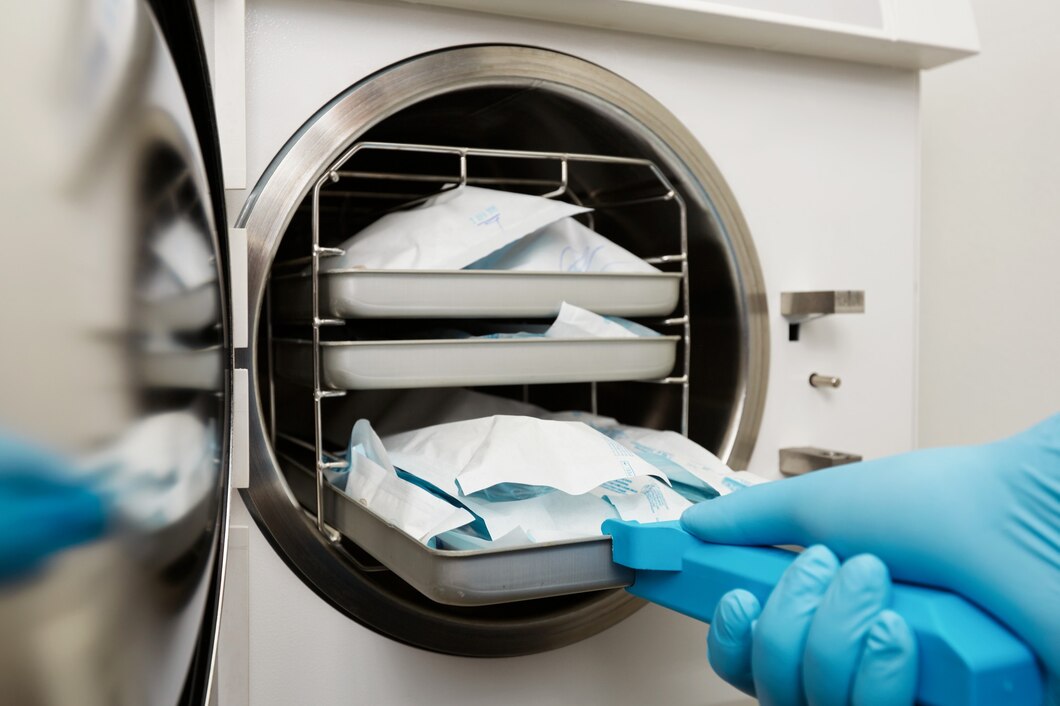

· By Trevor Horne
A Guide to Steam Sterilizers in Healthcare Settings: Ensuring Patient Safety and Infection Control
Infection control is a primary concern in any healthcare setting, be it a hospital, dental clinic, or veterinary practice. One of the critical instruments in ensuring patient safety and maintaining an environment free of pathogens is the steam sterilizer. While sterilization techniques have evolved over time, steam sterilization remains a staple method due to its efficacy, affordability, and compatibility with a wide range of materials. As medical professionals, it's our duty to ensure that our practices adhere to exceptional cleanliness standards and utilize proper sterilization techniques for the well-being of both patients and staff.
Selecting the right steam sterilizer for your healthcare facility can be a complex process, as numerous factors need to be considered, including your facility's size, the types and volumes of materials requiring sterilization, and the budget for equipment investment. To better equip healthcare professionals with the knowledge to make informed decisions, this comprehensive guide aims to provide insights into the different types of steam sterilizers, their features, and factors to consider when choosing the best fit for your facility.
Understanding Steam Sterilization
Steam sterilization has been a trusted method for eliminating microorganisms on medical instruments and equipment for over a century. This process involves subjecting items to moist heat at high pressure, effectively killing bacteria, viruses, fungi, and spores. Steam sterilization is efficient, non-toxic, and compatible with numerous materials, making it a preferred choice for healthcare settings. For optimal sterilization results, it's crucial to follow established guidelines, including proper cleaning and packaging of instruments before sterilization.
Types of Steam Sterilizers
There are several types of steam sterilizers available, each designed to cater to the varying needs of healthcare facilities. Some common categories include:
- Autoclaves: Designed for sterilizing instruments, lab glassware, and other heat-resistant items, autoclaves are sealed chambers that utilize high-pressure steam to kill microorganisms. These devices come in various sizes, ranging from smaller benchtop units suitable for dental offices to larger, high-capacity units appropriate for hospital settings.
- Gravity Displacement Sterilizers: Operating based on the principle that hot air rises and cool air descends, these steam sterilizers rely on gravity to displace cooler air within the chamber, allowing the steam to circulate.
- Pre-vacuum Sterilizers: These devices remove air from the sterilization chamber through a vacuum system before introducing steam. Pre-vacuum sterilizers generally offer faster cycle times and more consistent sterilization results compared to gravity sterilizers.
- Steam Flush Pressure Pulse (SFPP) Sterilizers: SFPP sterilizers use a series of pressurization and depressurization cycles, combined with steam flushes, to achieve sterilization. These devices can be particularly effective at sterilizing complex, hard-to-reach items like lumens and cannulated instruments.
Factors to Consider When Choosing a Steam Sterilizer
When selecting a steam sterilizer for your healthcare facility, consider the following factors:
- Capacity and Space Requirements: Assess your facility's sterilization needs in terms of the volume and types of instruments requiring sterilization. Choose a sterilizer with a suitable chamber size and ensure your facility has adequate space for installation, operation, and maintenance.
- Cycle Times and Efficiency: Consider sterilizers with efficient cycle times and energy usage. Quick cycles allow your facility to maximize throughput while reducing energy consumption.
- Ease of Use and Maintenance: Look for sterilizers with user-friendly interfaces, easy-to-understand controls, and clear instructions. Regular maintenance is essential for optimal sterilizer performance and equipment longevity, so choose a device that is easy to maintain and comes with reliable support services.
- Compliance with Industry Standards: Ensure the sterilizer complies with relevant industry standards and guidelines, such as the Canadian Standards Association (CSA) guidelines for steam sterilizers.
Conclusion
Investing in the right steam sterilizer is crucial when it comes to maintaining a sterile environment and ensuring patient safety in healthcare settings. Understanding the different types of steam sterilizers and considering factors such as capacity, efficiency, and ease of use will guide you in making an informed decision suited to your facility's needs.
By choosing the appropriate steam sterilizer and adhering to established sterilization guidelines, healthcare professionals can play their part in minimizing infection risks and promoting a safe, clean environment for both staff and patients.
Ready to explore steam sterilizer options for your healthcare facility? At ProNorth Medical, one of the top medical device and equipment suppliers in Canada and the US, we offer an extensive selection of steam sterilizers designed to meet your unique sterilization requirements. Browse our range and enhance hygiene, safety, and patient care standards within your facility.
